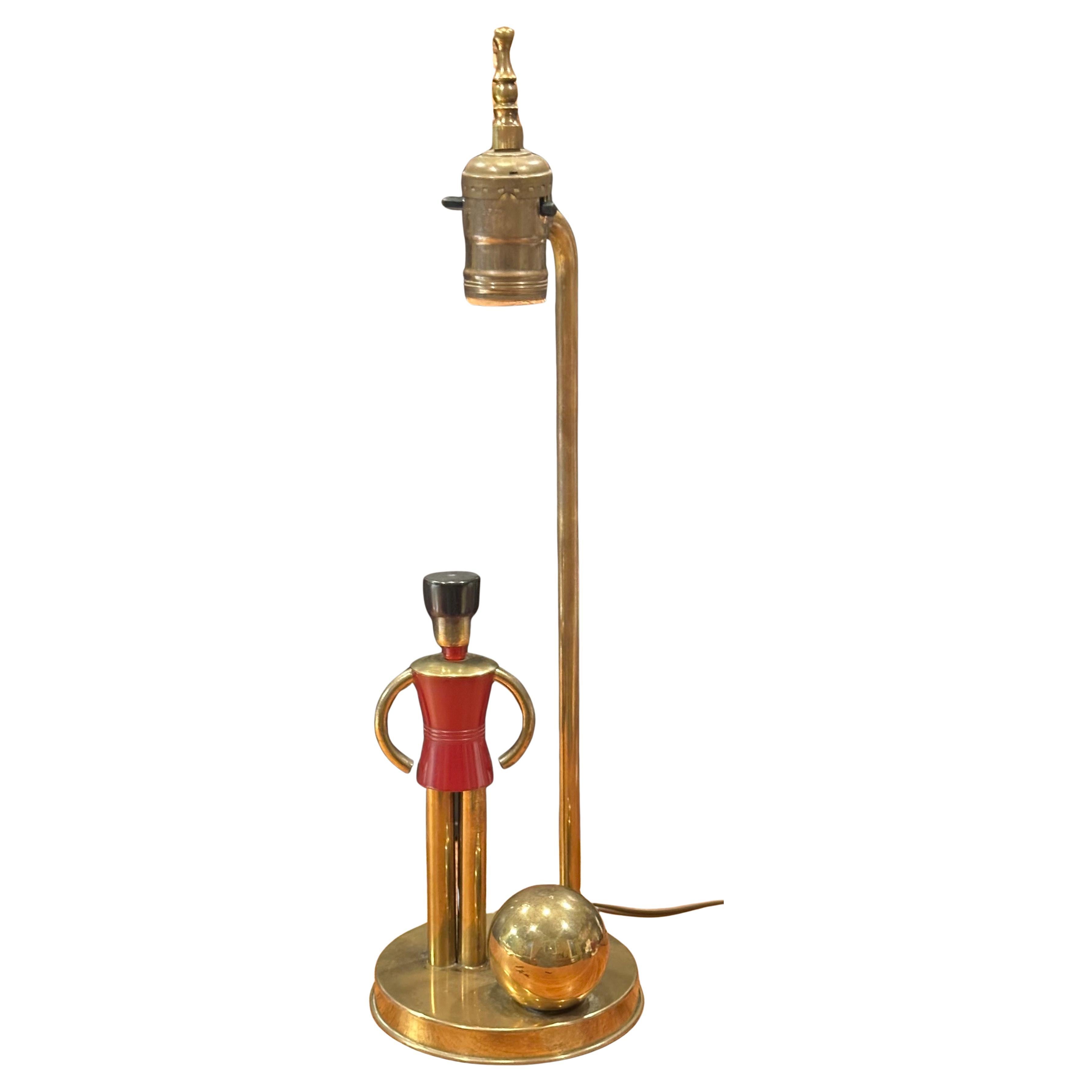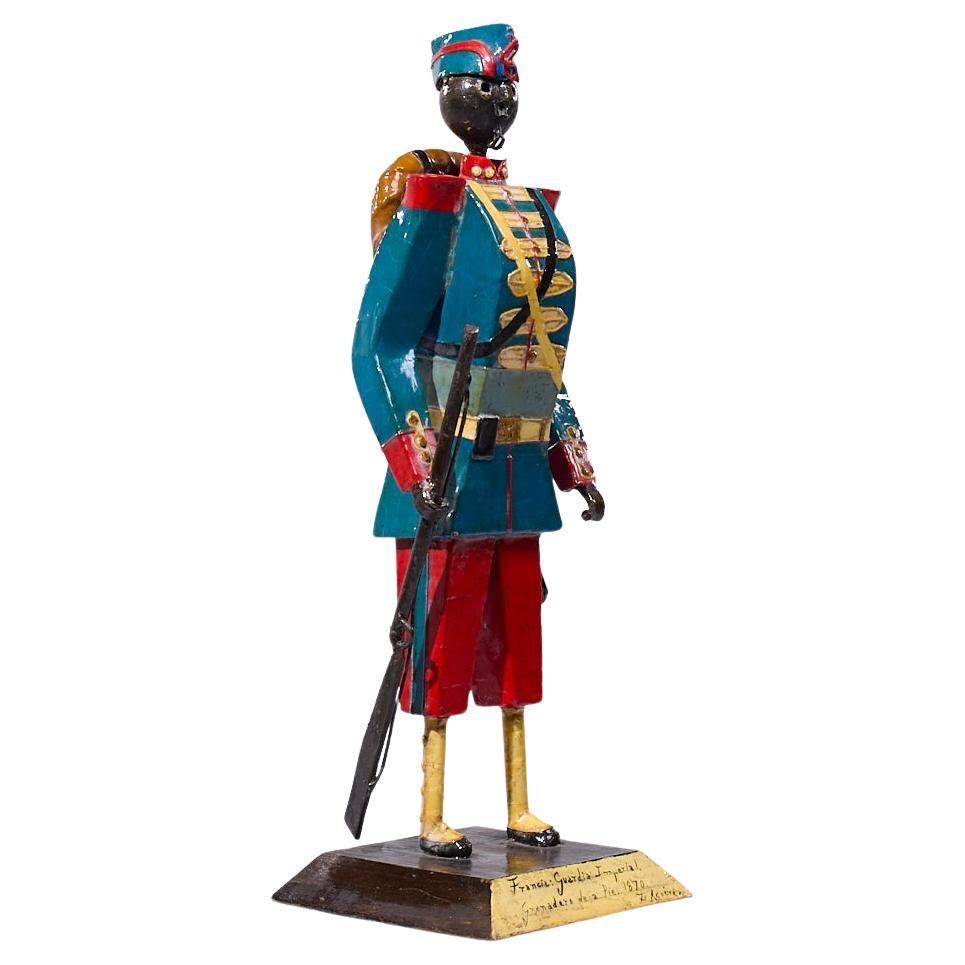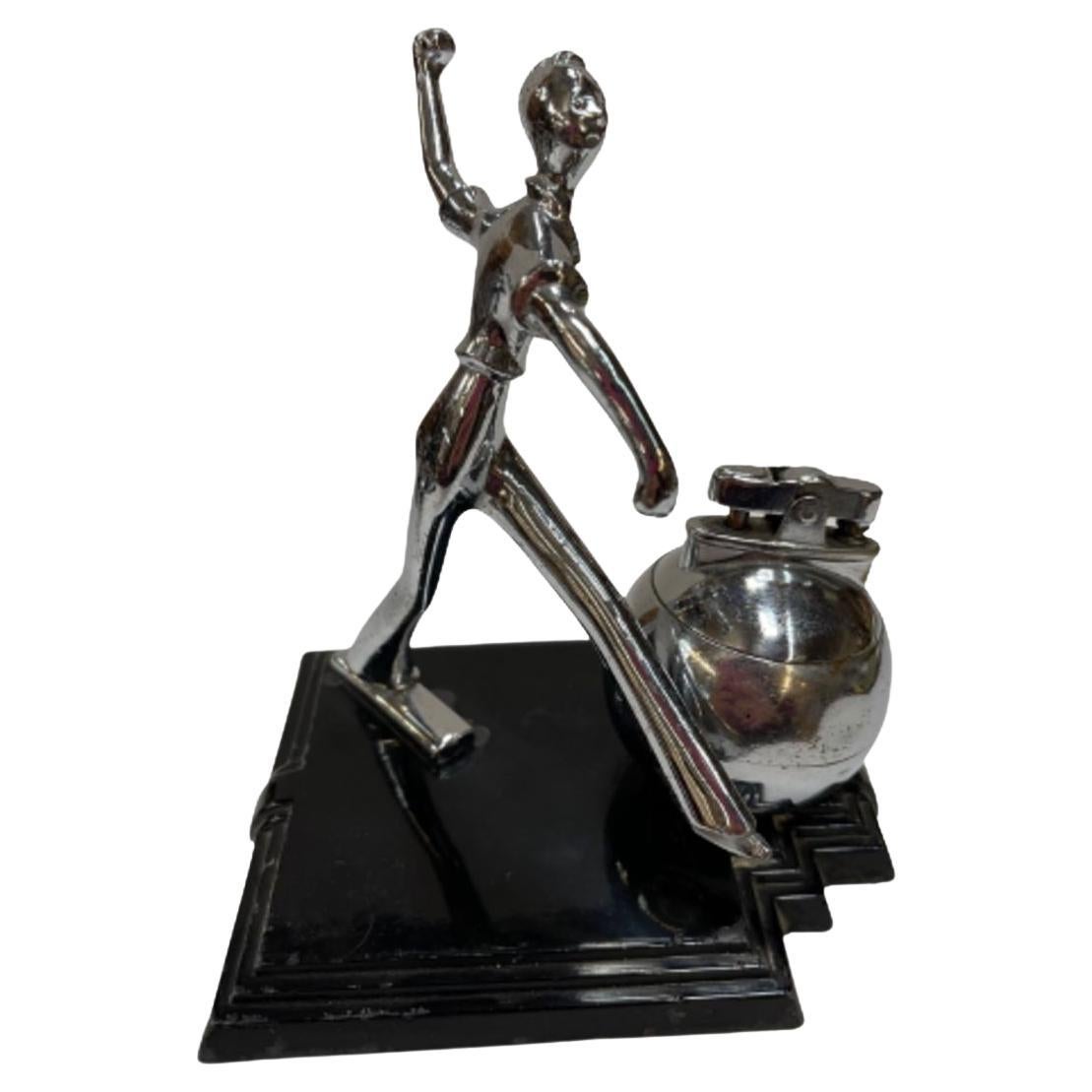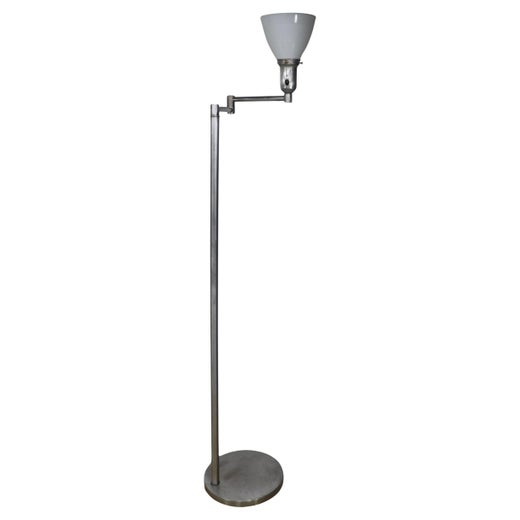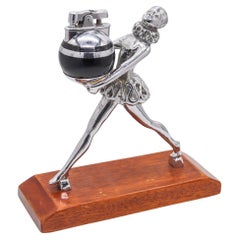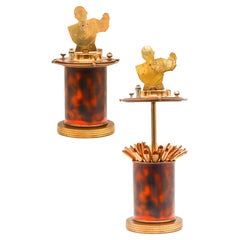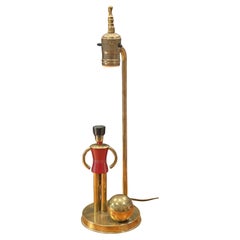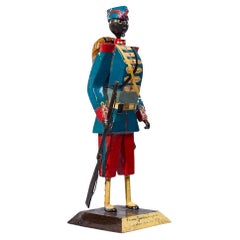WALTER VON NESSEN 1930 For Chase Lacquered Toy-Soldier Figure In Gilt Brass
About the Item
- Creator:Walter Von Nessen (Designer)
- Dimensions:Height: 7.15 in (18.17 cm)Width: 3.75 in (9.53 cm)Depth: 3.01 in (7.65 cm)
- Style:Art Deco (Of the Period)
- Materials and Techniques:
- Place of Origin:
- Period:
- Date of Manufacture:1930
- Condition:Wear consistent with age and use. The overall condition of this desk figure by Walter Von Nessen is excellent. Beside the little normal wear, there is no damage and all parts are secured and has been carefully inspected to guarantee the condition and authenticity.
- Seller Location:Miami, FL
- Reference Number:Seller: D052425BMNM/.67291stDibs: LU8303245264512
Walter Von Nessen
Art Deco industrial designer Walter von Nessen is best known for his glamorous Machine Age lighting designs and for his invention of the swing-arm lamp. Von Nessen was born in Germany, where he studied under Bruno Paul at Berlin’s Kunstgewerbeschule. After World War I, he worked for the architect Peter Behrens, in Berlin. He left in 1919 for Stockholm, where he designed furniture until emigrating with his wife, Margaretta, to the United States in 1923. In 1927, the couple opened Nessen Studios in Manhattan, designing and selling sleek, modern architectural lighting.
Art Deco was both novel and exciting in the late 1920s — as, indeed, was electricity itself — and Nessen Studios was at the forefront of the movement. Electric lighting designers at the time had no direct models to follow. The shapes and silhouettes of gas lamps, lanterns and chandeliers had been influenced by those of the kerosene-, oil- and candle-lit fixtures that preceded them, which in turn were informed by the fuels they used. Electric lighting required designs that accommodated essentials of the new technology, like cords and sockets. Von Nessen and his contemporaries thus had to create fixtures that addressed these challenges and looked modern without appearing overly mechanical.
Along with industrial-design visionaries of the period like Raymond Loewy, Gilbert Rohde and Donald Deskey, von Nessen crafted a style that was emblematic of the Machine Age. He produced lamps and home accessories from spun aluminum, with smooth surfaces that evoked the polished gleam of streamlined automobiles and airplanes. And he experimented with other popular materials of the era, such as Bakelite, chrome and fiberglass. His ingenious design for the now-ubiquitous swing-arm lamp earned him a reputation as an innovator.
Von Nessen’s work is represented in the collections of the Museum of Modern Art and the Cooper Hewitt Smithsonian National Design Museum, among other institutions. Designed to complement the luxurious interiors of the 1920s and ‘30s, still look fresh nearly a century later.
- ShippingRetrieving quote...Shipping from: Miami, FL
- Return Policy
More From This Seller
View AllVintage 1910s Austrian Art Deco Tobacco Accessories
Bronze, Enamel, Spelter
Vintage 1930s American Art Deco Tobacco Accessories
Steel, Chrome
Vintage 1930s American Art Deco Tobacco Accessories
Steel
Vintage 1930s German Art Deco Decorative Boxes
Brass, Steel
Vintage 1920s Austrian Art Deco Tobacco Accessories
Stainless Steel
Vintage 1930s American Art Deco Figurative Sculptures
Marble, Bronze, Gold Plate
You May Also Like
20th Century American Art Deco Table Lamps
Brass
Vintage 1930s Austrian Art Deco Figurative Sculptures
Brass
Vintage 1920s French Art Deco Busts
Bronze
Vintage 1970s Mexican Mid-Century Modern Figurative Sculptures
Metal
Vintage 1930s American Tobacco Accessories
Metal
Vintage 1970s Mexican Mid-Century Modern Figurative Sculptures
Metal
Read More
This Richly Textured Jean Mahie Cuff Was Designed in 1978 But Still Feels On Trend
Imbued with a subtle eroticism, this piece inspired by the aesthetics of ancient civilizations is 22-karat gold at its absolute sexiest.
Hunt for Thrilling Artist-Signed Pieces and Estate Gems at Treasure Fine Jewelry
A former architect, owner Edoardo Grande seeks out pieces with unparalleled workmanship and sculptural appeal.
